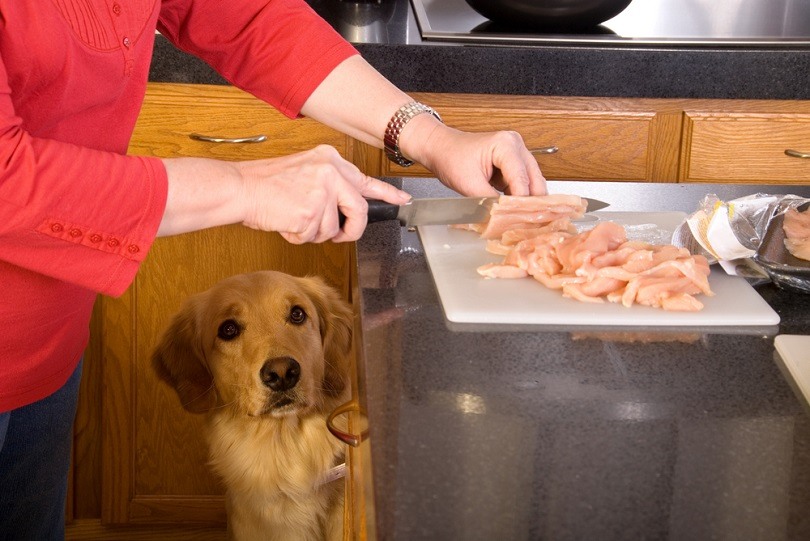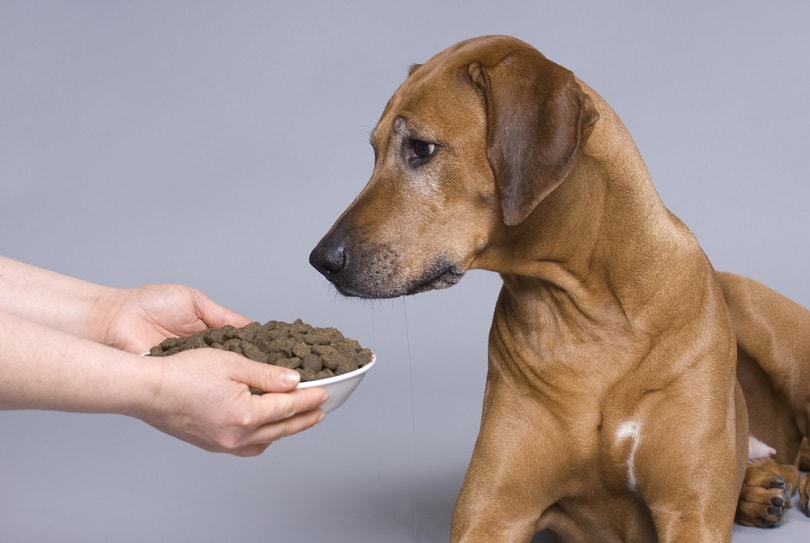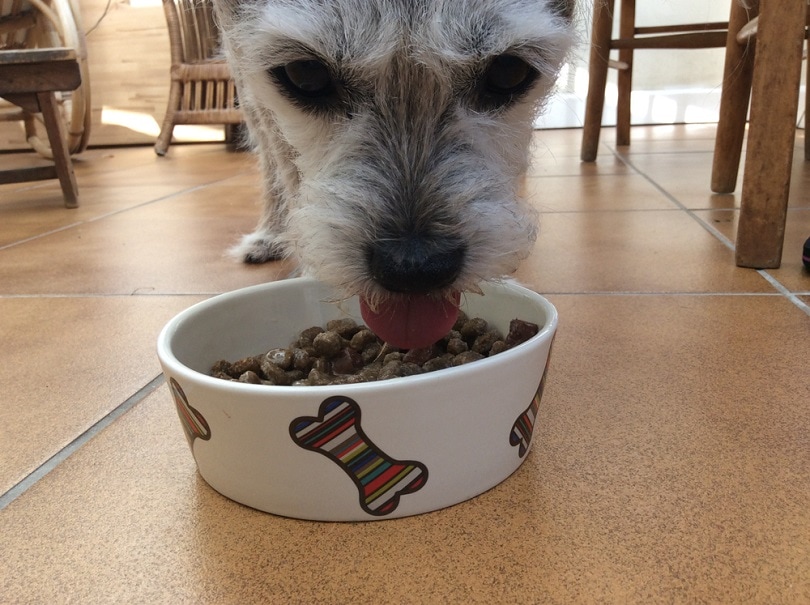Providing proper nutrition to senior dogs is not as straightforward as it might seem. For starters, different breeds have different nutritional needs. Secondly, the age at which a dog is considered senior also varies between breeds.
For instance, larger breeds have shorter life expectancies and reach their senior years much sooner than smaller breeds. Finally, and most importantly, neither the National Research Council nor the Association of American Feed Control Officials (AAFCO) has set guidelines regarding the dietary requirements of senior dogs.
As a result, it can be challenging to determine your senior dog’s exact nutritional requirements, especially regarding the appropriate protein levels. Roughly,protein makes up at least 25% of your senior dog’s diet. Fortunately, you can adjust your dog’s diet by understanding your senior dog’s physiology. This article will detail everything you need to know about a senior dog’s protein requirements.
How Much Protein Do Senior Dogs Need?
Dogs are omnivorous, meaning that protein (primarily meat) and fruits and vegetables account for a large portion of their diet. They have evolved to rely on protein across all stages of their lives. There is a myth that protein is bad for senior dogs.
Apparently, too much protein can overtax an older dog’s kidneys due to the high phosphorus levels that come with it. However, the study responsible for that myth used rats, not dogs. Therefore, while too much protein can be hazardous for a senior rat, the same does not apply to dogs.

Senior Dog Food vs. Regular Dog Food
Senior dogs require more protein than other dogs, and here is the reason. One of the functions of protein in the dog’s body is building and maintaining muscle tissue. Since dogs lose muscle mass as they grow older, they require more protein in their diet to hold on to muscle tissue for longer.
Muscle tissue loss compromises the dog’s immune system, making the animal more susceptible to diseases. Additionally, the dog loses their strength, affecting their energy levels and mobility. Therefore, by increasing the amount of protein in your senior pup’s diet, you will help them hold onto their strength for longer. Experts recommend ensuring protein makes up at least 25% of your senior dog’s daily caloric intake.

Encouraging Your Senior Dog to Eat
The main reason senior dogs are frail is their decreased appetite. Therefore, increasing the amount of protein in their food will not mean much if they don’t eat that food in the first place. However, you can make the dog’s food more palatable. That can involve warming the food to enhance its aroma, thus stimulating the dog’s appetite.
High-fat foods are also worth considering since they’re more appetizing, but it is best to consult your vet to develop a healthy diet for your senior pup.

If you need to speak with a vet but can’t get to one, head over to PangoVet. It’s an online service where you can talk to a vet online and get the personalized advice you need for your pet — all at an affordable price!
Conclusion
Generally, most senior dogs need more than the average amount of protein in their diets. Protein helps build muscle tissue, allowing the dog to hold onto their withering muscle mass for longer. Nevertheless, the amount of protein a senior dog requires varies between breeds, but a good rule of thumb is that protein should make up roughly ¼ of your dog’s daily calories. For more specifics regarding your loved one, consult your vet to determine the ideal nutritional requirements for your aging pet.
Other Dog Reads:
Featured Image Credit By: Maggie McManus, Shutterstock












